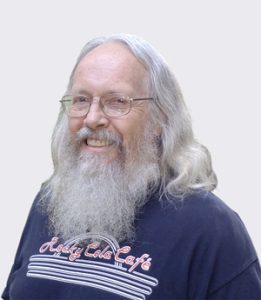Civil War Icon is Buried Next Door in Altadena
Few realize that right on our doorstep, on the border between La Cañada and Altadena, is the gravesite of Owen Brown, the son of Civil War firebrand John Brown, and a participant in the famous Harpers Ferry Raid.
How Owen Brown ended up being buried in far-off Los Angeles is a good story with many twists and turns, even into recent times. Of course, John Brown is famous, or perhaps infamous, in history as a catalyst of the Civil War. He and his sons, including Owen, set fire to the nation in a violent crusade to abolish slavery in the 1850s. In 1854 they murdered five proslavery settlers in Kansas, actually hacking them to death with broadswords. And in 1859 they led an armed insurrection against the government at the Federal Arsenal at Harpers Ferry in Virginia. They were hoping to inspire a nationwide slave revolt, but instead were captured after a pitched battle with U.S. soldiers. A handful of Brown’s band escaped, including Owen Brown. John Brown was hanged, which elevated him to martyr status in the north.
Owen Brown was a fugitive with a $25,000 price on his head. He evaded the law for two decades. But in about 1880 he did what so many people have done before and since – he left his past behind for a new life in California.
Owen’s older brother Jason, who had participated in the Kansas massacre, and his sister Ruth had moved to Altadena. Owen joined them there and he and Jason bought a piece of land in El Prieto Canyon, which overlooks the Arroyo Seco, immediately behind today’s JPL. They built a tiny cabin and cleared some land for cultivation. The mountain above them they named Brown Mountain, for their father. They involved themselves in community activities, particularly in the temperance movement, but Owen always wore pistols, a remnant of his violent past. They also received visitors at their cabin, tourists interested in viewing a living part of American history.
In 1889 Owen died of pneumonia. His funeral was huge, attracting thousands of mourners, both white and black. He was buried on a hill above their cabin, named Little Round Top for the pivotal Gettysburg battlefield. The headstone read “Owen Brown son of John Brown the Liberator, Died Jan. 9, 1889, Aged 64 yrs.” His grave became a pilgrimage site.
But in the 1980s the gravesite, which was on private land, became the focus of development forces. As homesites marched up the hill toward Owen Brown’s grave, the ownership of the grave and the headstone became highly contentious. Visitors to the gravesite began to encounter “No Trespassing” signs and harassment. A preservation group tried to buy the property, but failed. Even the federal government got into the act, considering seizing the property as a historic monument.
Legal battles continued over access to the site until 2002 when the headstone and the fence around it conveniently disappeared. Emotions in the community ran pretty hot, but no one was ever charged. After years of fruitless searching for the headstone, a hiker stumbled across it accidently. The headstone was lying face down at the bottom of the hill, with a rope nearby that had apparently been used to drag it there.
Since then, the recovered headstone has been preserved by concerned locals and, about two years ago, a deal was finally cobbled together to permanently save the gravesite. A developer on a nearby development had run into much community opposition. The developer agreed to buy the six-acre gravesite parcel, deed it to a conservancy and provide money for its preservation in exchange for approval on his project. With that deal in place, the public can now visit the gravesite of Owen Brown, a touchstone of American history. It’s an easy hike, and directions can be found online.
Thanks go out to my good friend Art Cobery who supplied me with the info for this article. Art showed me photos he took of the intact gravesite from decades ago, and described his grueling hike to the top of Brown Mountain high above Owen Brown’s gravesite.

president of the Historical
Society of the Crescenta Valley
and loves local history.
Reach him at lawlerdad@yahoo.com.
